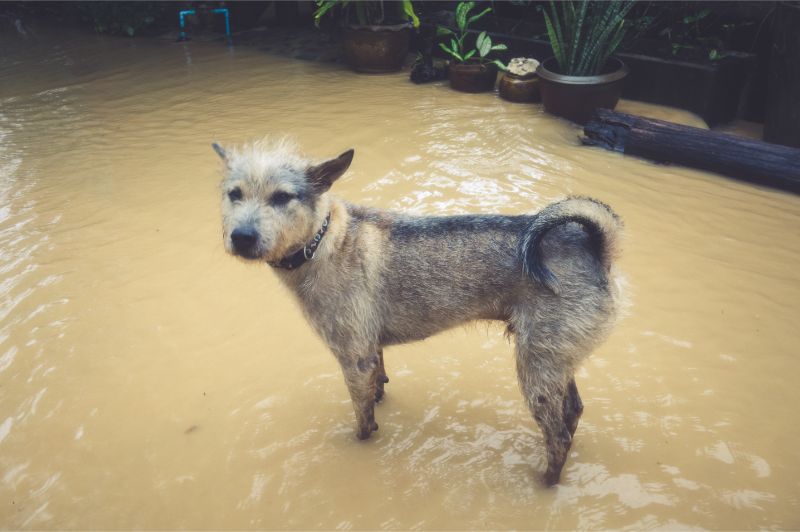 While the national season for hurricanes occurs between June 1 and November 30, hurricanes and tropical storms typically hit New Jersey between mid-August and October 31st. Ranging from Category 1-5, we all know that hurricanes can be extremely destructive and even deadly when they make landfall.
While the national season for hurricanes occurs between June 1 and November 30, hurricanes and tropical storms typically hit New Jersey between mid-August and October 31st. Ranging from Category 1-5, we all know that hurricanes can be extremely destructive and even deadly when they make landfall.
Between high winds, storm surges, and flooding, our coastal communities can face utter devastation. To prepare for the upcoming season, we recommend facing hurricane pet safety head-on.
Ahead of the Curve
Getting a handle on hurricane pet safety is always easier before disaster strikes. Acquiring a stockpile of necessities, preempting risky situations, and knowing where you can go with your pet in the event of an emergency can make all the difference.
Natural Disasters
Having an approach to hurricane pet safety is like a type of insurance against separation, loss, injury, or worse. While many natural disasters occur with little time to act, it’s common to have some notice regarding a storm heading our way. We may not know about its severity in advance, but if we appear to be in a hurricane’s path, it’s time to respond quickly. Our pets depend on us to have a plan.
A Word About Evacuation
Many people erroneously leave their pets at home when an evacuation notice is ordered. This is large because emergency shelters usually cannot take in animals. However, pets need safe places to go, too, and should never be left at home by themselves during an emergency.
Staying Together
Research where you and your pet can go during a serious weather event like a hurricane. We advise pet owners to call around at pet-friendly hotels in New Jersey to have a sort of standing reservation during peak hurricane season.
Otherwise, have a list ready of names and addresses where you can take your pet away from the shore. Friends, family members, co-workers, and more are typically accommodating during threatening storms. We also offer pet boarding.
Hurricane Pet Safety
An emergency kit is critical to hurricane pet safety and should contain the following items:
- At least 3 days of unexpired food and bottled water (some pet owners store up to 2 weeks worth)
- Can opener, if using canned food
- Bowls
- Blankets, towels, and comfy bedding
- Your pet’s crate (big enough for then to stand up inside of and turn around in)
- A month’s worth of prescription medication (you can never be too prepared!)
- Back-up leashes and collars (plus tags)
- Toys
- Cleaning supplies and gloves
- Extra waste removal bags
- Copies of medical records that show microchip information, training completion, completed vaccinations and parasite prevention (these may be necessary if you have to board your pet or bring them into a hotel)
- A recent laminated photo of your pet
- Kitty litter or puppy pads
- Waterproof containers
- Pet first aid supplies
Hiding Out
Many pets will find their own hiding places in which to wait out storms. As soon as you know of bad weather, be sure that your pet is not outside. Ahead of time, it’s worthwhile to run through the evacuation plan. If your pet isn’t used to their crate or traveling in the car, it’s a good idea to start now.
Safe, but Not Sound
Danger can still persist long after the wind and rain die down. Downed power lines, sharp objects, fallen trees, contaminated water, and other debris can be highly risky to pets. Likewise, animals displaced by the storm, such as raccoons, skunks, and other wildlife can be threatening.
After a storm, only allow your pet outside if they are leashed and attached to you.
Make It Through
If you are able to donate time or materials to shelters or emergency rescue groups, we encourage you to get involved. Likewise, foster families are always of value in post-hurricane communities.
If we can assist you further with questions regarding hurricane pet safety, please contact us at The Maywood Veterinary Clinic.

